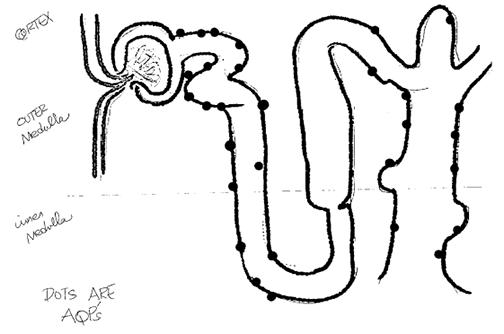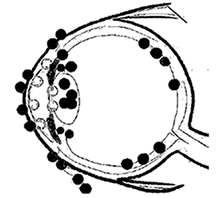Bachelor of Science (BS) in
Genomic Medicine
Aquaporin Activities
Discover the Role and Function of Aquaporins in the Human Body
What’s my Aquaporin Hypothesis?
In the simple diagrams below, you can see two very different structures in the human body: a cross section of the eye and a drawing of the nephron. Both have very different parts and adaptations, but both have a lot of aquaporins. For each question, give a few sentences in response.
Firstly, label the basic parts of the eye and the nephron, then notice where the aquaporins are (represented by dots).
Questions:
- What does the eye do? What is its function? Are there any parts of the eye that contain water?
- What do you think water does?
- What does the nephron do? What is its function?
- How does water relate to the nephron? How does blood relate to the nephron?
- Why are the aquaporins distributed in this way in the eye? What is your hypothesis?
- Why does the nephron have aquaporins on one side of the tubule but not the other?
- What kinds of problems would someone experience if a mutation were to occur in the aquaporin of the lens of the eye?
- What kind of problems would someone experience if a mutation were to occur in the proximal tubule of the nephron?
- Currently, there are 13 known human aquaporins in the eye and the nephron. Both the eye and the nephron have many of the same types of aquaporin. Bacteria have aquaporins too. What common theme do you see in a bacterium and your own nephron of the kidney regarding the function and evolution of the aquaporin? What’s your hypothesis?
Before you answer these questions, read this paper on aquaporin diversity:
https://www.journals.uchicago.edu/doi/full/10.1086/BBLv229n1p6
Discuss this and “draw out” ideas on paper and then present your hypothesis.
Color in and make notes on these drawings:
Cross section of the eye

The Nephron

